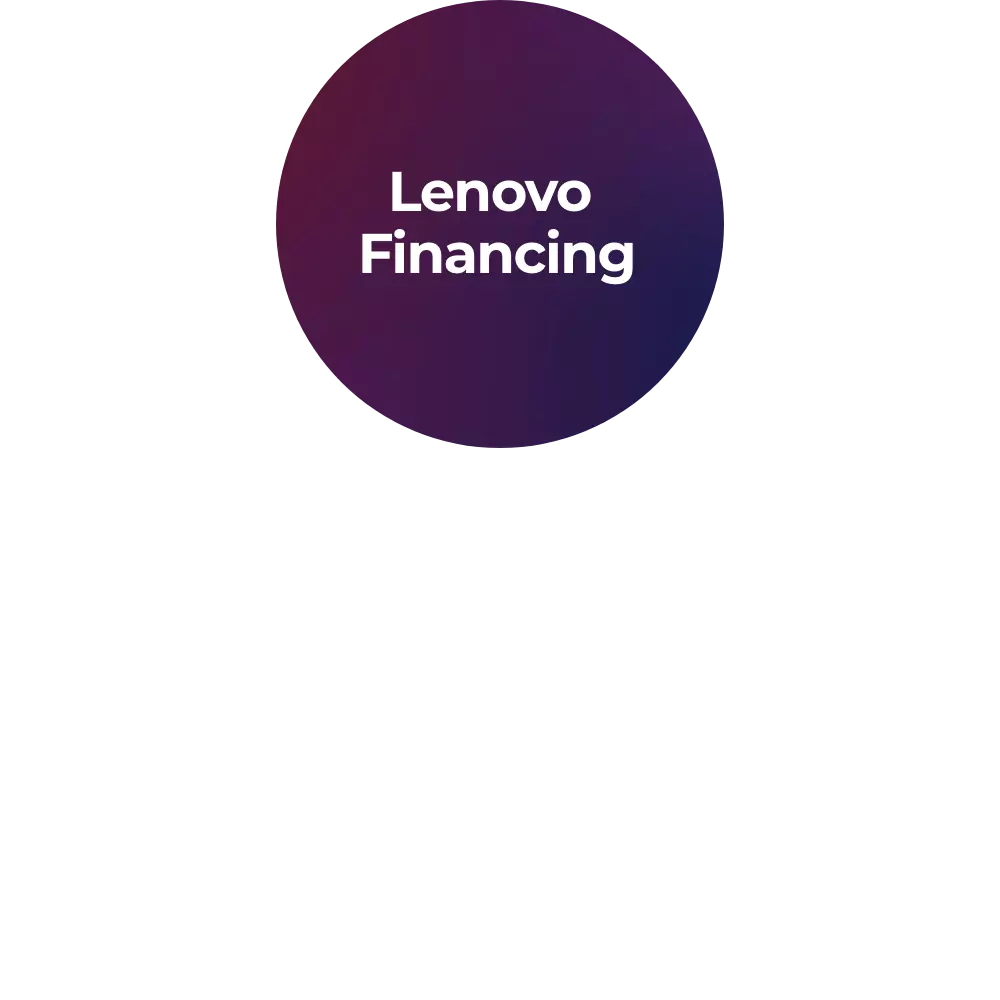What is cache memory?
Cache memory is a type of data storage used to store frequently accessed information for faster response time. It's a vital component in computer systems, and it's used to improve system performance. But what exactly is cache memory and how does it work? Let's take a look at the basics of cache memory and how it can help your computer run more efficiently.
At its core, cache memory is a form of random access memory (RAM) that stores recently accessed data for quick retrieval. It sits between the main RAM and the CPU, acting as an intermediary for faster data access. This strategic placement within the CPU gives cache memory a speed advantage, providing nanosecond access times to data and instructions that are frequently referenced.
As more data is stored in the cache, less time needs to be spent accessing information from RAM. This can lead to significant performance increases since RAM access times are relatively slow compared to cache. RAM, also known as DRAM, is installed on the motherboard and accessed by the CPU through a bus connection, making it about half as fast as cache memory.
Moreover, DRAM must be refreshed every few milliseconds, a requirement that cache memory does not have. This is because cache memory is built directly into the CPU, enabling the processor to access memory locations at the highest possible speed. While DRAM is less expensive, cache memory justifies its higher cost by significantly boosting performance.
Understanding these differences can help you appreciate why cache memory is crucial for efficiently running modern computer systems, bridging the gap between the speed of the CPU and the slower, yet more affordable, DRAM.
What is the purpose of DRAM in relation to data storage and retrieval?
DRAM is utilized to store frequently accessed disk data, enhancing input/output (I/O) performance by providing quicker access than traditional storage options like hard drives.
Do cache memory and main memory require refreshing?
DRAM needs to be refreshed every few milliseconds to retain data, whereas cache memory remains stable without the need for refreshing.
Where are cache memory and main memory located, and how does the CPU access them?
DRAM is positioned on the motherboard and accessed by the CPU through a bus connection, while cache memory is integrated directly into the CPU for rapid data access.
How does cache memory differ from virtual memory?
Understanding the distinction between cache memory and virtual memory is vital for optimizing a computer's performance. Both are essential components of a computing system, yet they serve different purposes and function in unique ways.
- Cache Memory: Cache memory is a small, high-speed storage component located close to the CPU. Its primary purpose is to store frequently accessed data and instructions, which allows the processor to quickly retrieve information without waiting for data from slower main memory (DRAM).
- Size and Speed: Cache is much smaller than main memory but significantly faster, enabling quick access to data the CPU regularly uses.
- Function: It actively anticipates the data needs of the CPU, effectively reducing the time needed to fetch information from main memory. This minimizes latency and enhances overall processing speed.
- Virtual Memory: Virtual memory, on the other hand, is a technique that allows a computer to compensate for shortages in physical memory by using disk storage. This method gives the illusion of a nearly limitless memory supply.
- Virtual Expansion: It provides an enlarged address space for applications, enabling larger programs or multiple applications to run concurrently without depleting the actual DRAM.
- Process: When DRAM is fully utilized, the operating system temporarily moves inactive data to the hard drive. This swapping creates a seamless experience for running applications by maintaining continuity in memory use.
Key Differences
Purpose:
Cache Memory: Optimizes speed by reducing data access time.
Virtual Memory: Enhances memory capacity, allowing systems to handle more extensive processes.
Location:
Cache: Located near the CPU and built directly into the processor or on a separate chip.
Virtual Memory: Utilizes the computer’s hard drive as a temporary space.
Operation:
Cache: Automatically stores copies of frequently accessed data to minimize delays.
Virtual Memory: Manages memory overflow by moving inactive data to disk storage, using page files or swap files.
In summary, while cache memory accelerates CPU access to essential data, virtual memory extends the usable space available to applications, allowing for efficient multitasking and execution of larger programs. Both systems collaboratively support a computer’s performance, each addressing a unique aspect of data management.
How does cache work?
Cache works by taking advantage of two facts:
- Data stored in main memory tends to be reused frequently
- Certain operations are repeated often during computation.
When a particular piece of data or instruction is requested repeatedly, caching stores it in fast-access memory so that it can be accessed quickly when needed again. This reduces latency and increases performance by reducing the need to access main memory multiple times for the same piece of data or instruction set.
Caching also allows processors to predict what instructions they may need next based on previously requested instructions and preload them into cache before they are actually needed. This way they are ready to go when they are requested instead of having to wait for them from main memory.
What is locality in the context of cache memory?
Locality of reference is a crucial concept to grasp when discussing cache memory's role in enhancing a computer's performance. Locality refers to the predictable patterns found in memory access, which cache memory exploits to optimize data retrieval processes.
Types of Locality
There are two primary types of locality that are vital to how cache memory operates:
- Temporal Locality: This occurs when certain data is accessed repeatedly over a short period. For instance, if a program frequently accesses a specific variable, temporal locality ensures that the necessary data remains readily accessible, minimizing the time needed to retrieve it.
- Spatial Locality: This involves accessing a sequence of data elements that are physically close to each other in memory. For example, when traversing an array or a list, the memory locations are often consecutively aligned, allowing the cache to load them efficiently in one go.
By leveraging these patterns, cache memory can significantly reduce access times and improve a system's overall speed and efficiency. This reliance on locality ensures that frequently accessed data is available quickly, ultimately making computing processes faster and more efficient.
What are the data writing policies in cache memory?
In the realm of computing, cache memory operates under distinct data writing policies to maintain efficiency and consistency. Two predominant methods are widely implemented: write-through and write-back.
Write-Through
- Simultaneous Update: When employing the write-through policy, data is simultaneously updated in both the cache and the main memory.
- Immediate Consistency: This ensures data consistency, but often results in a latency increase due to the double-write requirement.
Write-Back
- Cached Priority: With write-back, data is initially written only to the cache. It is then later pushed to the main memory, if needed.
- Efficiency: This approach can enhance performance by reducing immediate writing demands, but it risks occasional inconsistencies between cache and main memory.
Data Consistency Mechanisms
One critical element in assessing data consistency, particularly under the write-back policy, is the "dirty bit."
- Dirty Bit Functionality: This specific bit, integrated into memory blocks, signals whether data has been altered. An active dirty bit indicates that the processor register file may be handling outdated data, suggesting newer versions might exist elsewhere within the system.
These policies highlight the trade-offs between performance and consistency in managing data in cache memory, guiding how systems handle updates and synchronization.
How does cache memory mapping work?
Cache memory mapping is essential for swiftly fetching data and optimizing system performance. There are three key configurations for mapping cache memory: direct mapped, fully associative, and set associative caches.
- Direct Mapped Cache In direct mapped cache, each memory block is assigned to one specific cache location. Imagine it as rows in a table with three important pieces:
- Cache Block: Holds the actual data.
- Tag: Contains part of the data's address to help identify it.
- Flag Bit: Indicates if the data in that row is valid.
- Fully Associative Cache Fully associative cache improves flexibility by allowing any block of data to be stored in any cache location. Unlike direct mapped, this method doesn't restrict data to a particular spot, reducing conflicts. However, it requires complex searching operations, because any block can reside anywhere, necessitating a scan of the entire cache to find a specific piece of data.
- Set Associative Cache Set associative cache strikes a balance between the rigidity of direct mapping and the flexibility of full associativity. Here, cache is divided into a number of sets—each set can store multiple data blocks. For example, in an N-way set associative cache, each block from main memory can map to any of the "N" locations within a set in the cache. This configuration offers improved performance by reducing the likelihood of conflicts seen in direct mapped caches while minimizing the search complexity associated with fully associative caches.
This structure is straightforward but can lead to conflicts, since multiple data blocks may compete for the same cache space.
In summary, choosing the right cache mapping method involves understanding these variations and their performance impacts. While direct mapped caches are simpler and cheaper, they are more prone to conflicts. Fully associative caches avoid these conflicts but at a cost of increased complexity. Set associative caches provide a middle ground, often used in modern systems for balanced performance.
What are the specialization and functionality of different caches?
Cache memory exists at three levels, with each level getting progressively larger but slower than the one before it: L1 (Level 1), L2 (Level 2), and L3 (Level 3).
The Level 1 cache is typically built into the processor itself and stores recently used instructions or data that are most likely to be requested again soon; this makes it extremely fast as compared to other types of storage.
Level 2 and Level 3 caches are typically external components that store additional information that may be needed by the processor in order to run efficiently; they are slightly slower than Level 1 but still provide quick access when necessary.
Beyond the typical levels of cache memory, there are specialized caches that serve distinct functions within a system. For example, translation lookaside buffers (TLBs) are specialized memory caches that map virtual addresses to physical addresses, facilitating quicker data retrieval.
Moreover, some caches aren't purely memory caches. Disk caches, for instance, use DRAM or flash memory to store frequently accessed disk data, speeding up retrieval times similar to CPU instruction caches. This highlights the adaptability of caching technology across various types of storage.
Specialized caches are also integral to applications like web browsers, databases, and network protocols. These caches can be distributed across multiple networked hosts, enhancing scalability and performance for the applications that rely on them. By optimizing data access and storage, these specialized caches ensure smoother and more efficient operation across diverse computing environments.
What are some specific applications of specialized caches?
Specialized caches are used in various applications, including web browsers, databases, network address binding, and client-side Network File System protocol support, to enhance performance and efficiency.
How are caches categorized as specialized?
Caches can be categorized as specialized based on their design and function. For instance, the L3 cache's shared design or the separation of instruction and data caches into distinct categories can define them as specialized.
What are specialized caches beyond traditional memory caches?
Specialized caches include types like translation lookaside buffers, which handle virtual to physical address translations, and disk caches that use DRAM or flash memory to improve data access speeds similar to CPU instruction caching.
What are the types of cache memory?
Cache memory exists at three levels, with each level getting progressively larger but slower than the one before it: L1 (Level 1), L2 (Level 2), and L3 (Level 3).
The Level 1 cache is typically built into the processor itself and stores recently used instructions or data that are most likely to be requested again soon; this makes it extremely fast as compared to other types of storage. L1 is embedded within the CPU chip, ensuring immediate access to critical data and instructions.
Level 2 and Level 3 caches are typically external components that store additional information that may be needed by the processor in order to run efficiently; they are slightly slower than Level 1 but still provide quick access when necessary.
- Level 2 (L2) cache can be embedded on the CPU or reside on a separate chip, connected via a high-speed alternative system bus, allowing it to bypass the main system bus and reduce traffic delays. This strategic setup enhances the processor's efficiency by offering a larger storage capacity than L1.
- Level 3 (L3) cache serves as a specialized memory to bolster the performance of L1 and L2 caches. Although L3 is not as fast as L1 or L2, it is typically twice the speed of DRAM and offers a shared resource among multiple cores in multicore processors. This shared L3 cache can elevate instructions to higher cache levels, optimizing data retrieval processes.
By understanding these cache levels and their roles, one can appreciate how they contribute to the overall speed and efficiency of modern processors.
What is the role of L3 cache in cache hierarchy?
L3 cache is designed to boost the efficiency of L1 and L2 caches, often storing data that may be elevated to a higher cache level upon request.
How do the cache levels interact with each other?
The L3 cache acts to enhance the performance of L1 and L2 caches. In multicore processors, each core may have its own L1 and L2 caches, while the L3 cache is shared among the cores.
What are the differences in speed and capacity between the cache levels?
L1 cache is the fastest but has limited capacity. L2 offers more storage but is slightly slower than L1. L3 cache, while slower than both L1 and L2, is significantly quicker than DRAM and usually larger in size.
What is the physical placement of each cache level?
The Level 1 cache (L1) is typically integrated directly into the processor chip. In contrast, Level 2 cache (L2) can be either on the CPU or located on a separate chip, sometimes connected via a high-speed bus.
How does cache memory impact system performance?
The use of caching helps to reduce latency by minimizing the amount of time needed to access data stored in main memory. By reducing latency, systems can perform more operations per unit time—which translates into improved system performance.
Additionally, caches make efficient use of available resources; they are relatively small in size but have a large impact on overall system performance due to their speed and efficiency.
What is a cache miss?
A cache miss occurs when the processor looks for data in its cache and does not find it. When this happens, the processor has to retrieve data from the main memory, which takes longer than if it had been able to find the data in its own cache.
A high number of cache misses can indicate that there are problems with your system's memory management or that your system needs more RAM installed.
How to fit caching into your system?
The first step in fitting caching into your system is understanding how much RAM you have available. You should also consider how often you need access to certain types of data; if you frequently use large files or databases, then caching might be beneficial for you because it will reduce retrieval time for those types of files.
Finally, make sure that your operating system has enough room for both RAM and caching; if not, then you may need to upgrade your hardware in order to accommodate both types of memory.
What are the benefits of cache memory
Cache memory provides several benefits such as improved latency, increased throughput, reduced power consumption, improved reliability, and increased scalability. This makes it ideal for use in applications such as web browsing where latency must be minimized for optimal user experience.
Additionally, since cache memory requires less power than other forms of storage, it can help conserve battery life in mobile devices or extend device life in general applications where battery power is limited or not available at all times.
Finally, due to its scalability feature, cache memory can grow with a system’s needs without needing an upgrade or replacement; this makes it an excellent choice for systems where scalability is crucial, but upgrades may be difficult or expensive.
Cache memory plays an important role in modern computing systems by providing quick access to frequently used instructions or data while reducing latency and improving overall performance. Its numerous benefits make it an invaluable resource for any computer system looking for faster speeds and more reliable operation.
Understanding how cache works and how its various levels interact with one another will help you make better decisions when building your own computer systems—and ultimately ensure that they perform optimally over time!














